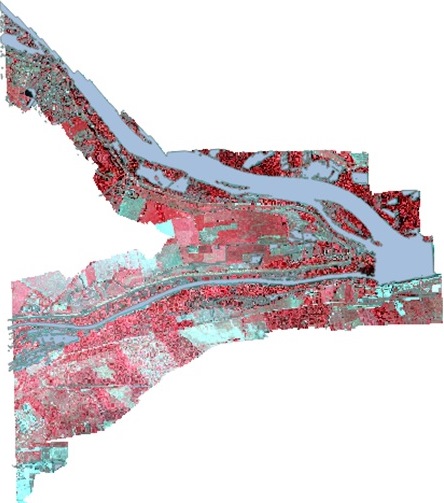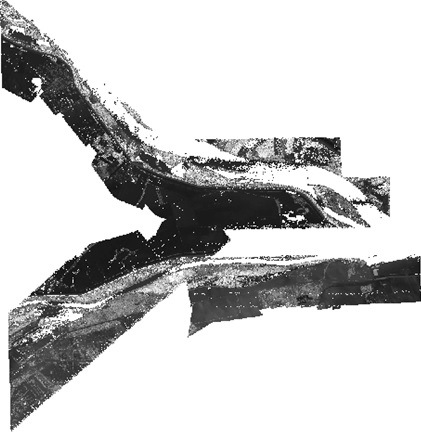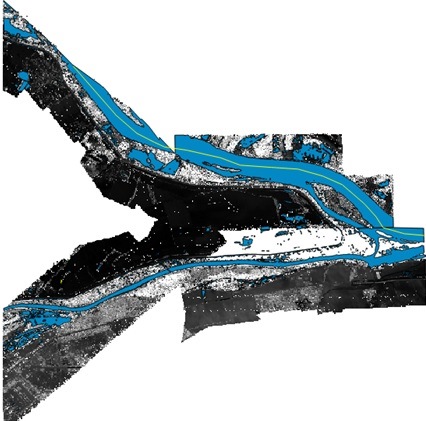I am analyzing orthoimage and LiDAR dataset to find out flood areas. I extracted water areas as vector polygon from orthoimage using multiresolution segmentation in eCognition, and generated DTM (1.5 spatial resolution) from LiDAR dataset using moving planes algorithm in OPALS.
Now I am going to extract elevation of water surface areas from DTM and attach to corresponding water features by zonal statistics and also build cross section profile of water surface. One of the drawback of this work is DTM has a lot of big gaps in water areas due to very poor LiDAR returns on water surface.
I am using zonal statistics and cross-section profiles for flood analysis, but getting poor result because of many holes on the water surface in DTM. The profile line was taken from the upper left to the lower right (see the yellow line on the last map).
I tried to interpolate the DTM, but the methods I used interpolate the surface using also the cells of coasts of river resulting false elevation on water surface. I extracted only water areas on DTM and want to interpolate it within overlapping water polygon, so I would get nicer zonal statistics and smoother cross-section profile. Does anybody know the method or tool to do it?







